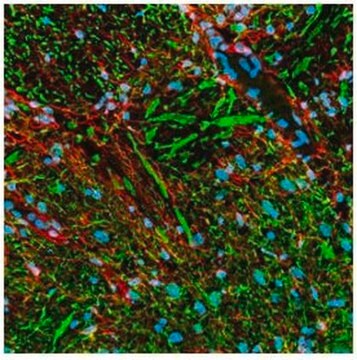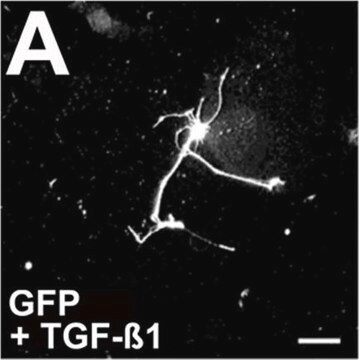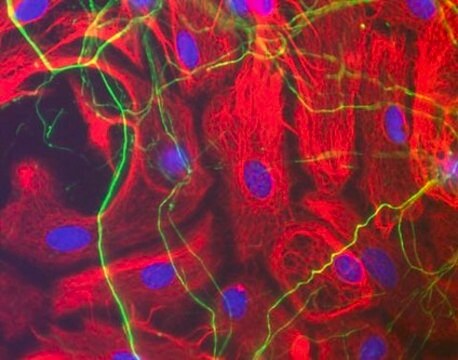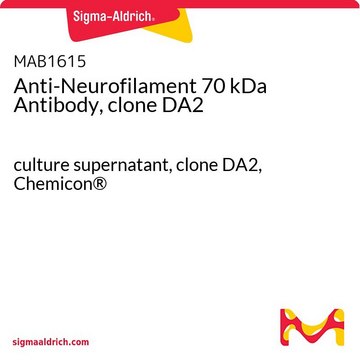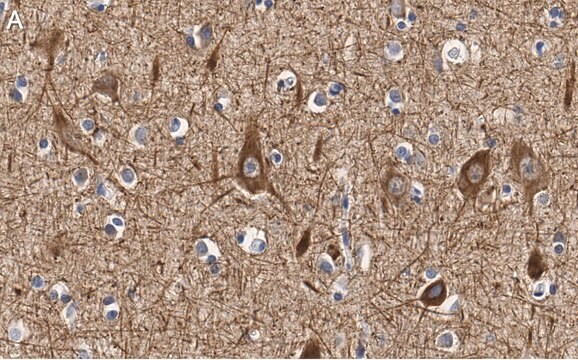N5264
Monoclonal Anti-Neurofilament 160 antibody produced in mouse
clone NN18, ascites fluid
Sinónimos:
Monoclonal Anti-Neurofilament medium chain
About This Item
Productos recomendados
biological source
mouse
Quality Level
conjugate
unconjugated
antibody form
ascites fluid
antibody product type
primary antibodies
clone
NN18, monoclonal
mol wt
antigen 160 kDa
contains
15 mM sodium azide
species reactivity
human, pig
technique(s)
immunohistochemistry (formalin-fixed, paraffin-embedded sections): 1:40 using human tissue sections
immunohistochemistry (frozen sections): suitable
western blot: suitable
isotype
IgG1
UniProt accession no.
shipped in
dry ice
storage temp.
−20°C
target post-translational modification
unmodified
Gene Information
chicken ... NEFM(396206)
human ... NEFM(4741)
mouse ... Nefm(18040)
rat ... Nefm(24588)
General description
Specificity
Immunogen
Application
- Immunoblotting.
- Immunohistochemistry
- Immunofluorescence
Biochem/physiol Actions
Disclaimer
¿No encuentra el producto adecuado?
Pruebe nuestro Herramienta de selección de productos.
Optional
Storage Class
10 - Combustible liquids
wgk_germany
WGK 3
flash_point_f
Not applicable
flash_point_c
Not applicable
Elija entre una de las versiones más recientes:
¿Ya tiene este producto?
Encuentre la documentación para los productos que ha comprado recientemente en la Biblioteca de documentos.
Nuestro equipo de científicos tiene experiencia en todas las áreas de investigación: Ciencias de la vida, Ciencia de los materiales, Síntesis química, Cromatografía, Analítica y muchas otras.
Póngase en contacto con el Servicio técnico